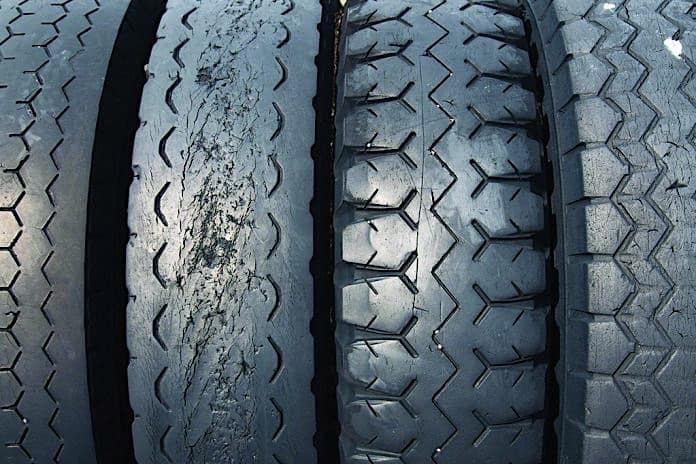Many school districts apparently have yet to catch on to low rolling resistance tires, or LRRTs, in order to comply with a pending federal mandate to improve fuel efficiency and reduce greenhouse gas emissions, if the results of a recent STN survey are any indication.
According to the reader survey conducted in September and October, more than 80 percent of 227 respondents said they did not currently have LRRTs on their buses, even though some indicated that when they purchase new buses, fuel efficiency is a factor in their decision-making. The districts’ fleets ranged in size from five to more than 2,000 buses.
Tire makers and school bus manufacturers expressed little surprise at the percentages. “That (80 percent) sounds about right,” said Chris Bantrup, Michelin’s key account manager, adding that the aerodynamics of a school bus work against improving mileage significantly. “When you talk about school buses, you’re basically talking about something that resembles a shoebox. It’s tough to improve the aerodynamics of a shoebox.”
LRRTs are but one of several technologies suggested by the NHTSA as part of new Phase 2 rules to address environmental concerns, in partnership with the EPA’s efforts to reduce greenhouse gases. Also included are aerodynamic technologies, tire pressure monitoring systems, idle reduction and retrofit technologies. The new standards are intended to save $1.7 trillion at the pump, reduce the U.S. consumption of oil by 12 billion barrels and cut greenhouse gas emissions by six billion metric tons over the course of the program, according to EPA’s website.
The plan calls for all new school buses to come equipped with LRRTs beginning with model year 2018. Michelin, Hankook, Goodyear and Continental Tire currently manufacture LRRTs. Continental announced in October 2015 that it would supply all IC Bus models with LRRTs as standard equipment.
Several transportation directors spoken to for this article had little or no knowledge of the capabilities of the LRRTs and exhibited little or no awareness of NHTSA plans.
Bruce Miles is director of government specifications and product validation for Blue Bird. He said Michelin, Hankook and Goodyear LRRTs are available to the OEM’s customers. He added that variety helps districts comply with agreements they have with certain tire companies.
Some industry experts said school districts won’t make the switch to LRRTs until they have to because they don’t want to throw away tires with remaining tread life for even newer, more expensive ones.
Transportation Director George Sontag said his district, Centerville Schools in Ohio, has used LRRTs for several years in concert with other technology. “We experiment with different technologies and if it works we use it,” Sontag said. “We get awful good fuel mileage because we upgrade our engines and rear axle ratio.”
LRRTs originally were developed for line haul trucks that travel cross-country. Bautrup said the school bus application could be problematic. “We build tires for school buses that can stand up to starting and stopping, the potential curbing and rural application on gravel roads,” he explained. “What can happen is you will have a tire that would wear out so fact that you create another problem.”
Linda Beale doubles as the transportation supervisor and superintendent’s secretary for the remote Waelder ISD in rural Texas. She said LRRTs are currently installed on three older buses that are used infrequently. Beale said Waelder has several hazardous routes, the most grueling being a 50-mile route on an all-dirt road. She said two buses purchased in 2014 and 2015 will probably be outfitted with the new LRRTs when the regular tires wear out, but she expressed concern about the tires’ durability.
Another requirement called for in Phase 2 is that LRRTs have a tire management system to monitor tire pressure. “It all goes hand in hand to improve fuel efficiency,” said Frank Sonzala, former executive vice president of Pressure Systems International. “School buses get treated the same. When they buy new buses, they must include specifications for rolling resistance tires and a tire management system. When they buy new buses they will have to include specifications for low rolling resistance tires.”
















